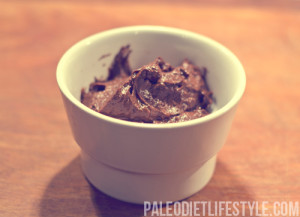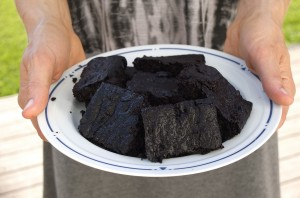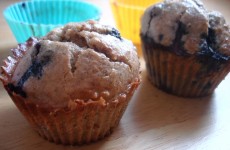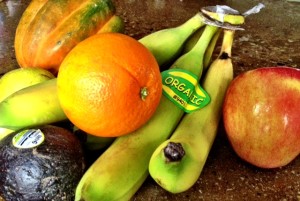Got Milk? You don’t have to answer yes.
What About Calcium on a Dairy Free Diet?
I’m constantly having conversations with friends and parents and parents’ friends and friends who are parents about the potential benefits of taking dairy out of the diet. Nine out of ten times, the first question is “What about calcium and bone health if we take out dairy?” What I sometimes want to say is, “What about it?” But usually what I do say is that, calcium from dairy is actually poorly absorbed by our bodies and there are much better sources out there.
Also, as the milk intake in children in the US has increased, bone health has decreased, so clearly milk isn’t the magic bullet for bone health. I, personally, believe there are many factors contributing to our poor bone health, especially among kids. Some of which are: poor calcium, vitamin D, and magnesium sources/intake (all are needed for strong bones), stress, high phosphorus foods (milk! and dark soda), and high acid foods/drinks.
Dairy Free Story # 1
I talked to a mom this week who’s child responded amazingly well with much improved behavior when the dairy was taken out, but lost a little weight in their transition to gluten-free/casein-free or GF/CF. (There are ways to avoid unwanted weight loss… make an appointment with me for help!) The doctor was so worried about the weight that he totally disregarded the improvement in ALL OTHER areas of life. This is unfortunate since there are really easy ways to increase calories and fat in kids’ diets through real food if the calories from whole milk are removed. This is why I am at Marian Hope Center… to help you through these transitions.
Dairy Free Story #2
Another kiddo who just turned 1 year old has had chronic rashes in various places, very poor circulation, foul smelling stools, general moodiness, and poor weight gain. Her mom took out just the milk (they are working towards getting cheese and yogurt out) and within two weeks her skin was clear, mood improved, diaper rash gone, fingers were no longer purple from poor circulation and stools were less foul smelling! Just the milk, and all those things improved. I’m not making this up, people!
The Dairy Council has convinced most of America that consuming dairy is essential for bone health. The research paints a different picture. Diets emphasizing dairy don’t necessarily equal better bone health. In many parts of the world dairy is a very, very small part of the diet, and bone problems from lack of calcium are rare. This quote sums up the research:
Scant evidence supports nutrition guidelines focused specifically on increasing milk or other dairy product intake for promoting child and adolescent bone mineralization. (Lanou 2006)
There you have it. Don’t worry about the health of your child who doesn’t consume dairy. All you need to do is include well-absorbed calcium sources, and be sure the calories from milk, cheese and yogurt are replaced with another calories source. Of course, now you’re wondering what the good sources of calcium are. Never fear, I wouldn’t leave you without them…
Non-Dairy Calcium Sources
Sesame butter (unhulled sesame seeds)
Salmon with bones1
Shrimp
Cooked turnip greens
Cooked bok choy
Cooked collards
Cooked spinach2
Cooked kale3
Navy beans4
Pinto beans4
Almonds
Hazelnuts (filbert)
Walnuts
Sunflower seeds
1. Salmon bones in canned salmon are very soft so can be mashed with a fork when making Salmon patties. No one will know they are eating the bones
2. Spinach is high in Oxalate when raw. Oxalate decreases calcium absorption, but cooking Spinach decreases the oxalates making the Calcium more bio-available.
3. Kale is a LOW oxalate food so you can get the calcium from raw or cooked. Try Kale Chips!!!
4. Beans contain phytates which inhibit mineral absorption. To decrease phytates, use dry beans, soak overnight, and boil in fresh water. Beans can also be hard to digest so if you experience gas after eating beans, don’t eat them often and chew really well
Isn’t Soy High in Calcium?
Yes, it is high in calcium; but in all aspects of nutrition, it’s a four letter word. Just say no to soy!
Since this isn’t a blog on Soy, I’ll just give you some resources if you need help being convinced.
So that wraps it up for this time. Remember, if you need help navigating the nutrition maze, email me at bpage@marianhopecenter.org to schedule an appointment. I see adults and children and your child does not have to be receiving services at Marian Hope Center.

 So we continue with our real food series… Granted, we are just scratching the surface of each of these topics, but I’ve been doing my best to give you links to more information. We have now come down to the last topic in this series- grains. Oh the controversy!
So we continue with our real food series… Granted, we are just scratching the surface of each of these topics, but I’ve been doing my best to give you links to more information. We have now come down to the last topic in this series- grains. Oh the controversy!


 Perhaps the most obvious “real foods” are fruits and vegetables. I won’t belabor the benefits of fruits and vegetables because that is public knowledge (one thing the USDA and I actually agree on), but that doesn’t change that most of us still struggle to get them in, wonder how to use them, and have questions about quality. I’ll do my best to clarify some of these issues, and feel free to leave comments below if you have other real food quandaries.
Perhaps the most obvious “real foods” are fruits and vegetables. I won’t belabor the benefits of fruits and vegetables because that is public knowledge (one thing the USDA and I actually agree on), but that doesn’t change that most of us still struggle to get them in, wonder how to use them, and have questions about quality. I’ll do my best to clarify some of these issues, and feel free to leave comments below if you have other real food quandaries. Hello everyone, I’m Blakely Page RD,LD– the Registered Dietitian with Marian Hope Center. I’ve already met some of the fabulous families with amazing kids at Marian Hope Center and I’m looking forward to meeting more of you! Let me tell you a little about myself, and then I’ll let you in on the exciting developments happening in the nutrition world at Marian Hope Center.
Hello everyone, I’m Blakely Page RD,LD– the Registered Dietitian with Marian Hope Center. I’ve already met some of the fabulous families with amazing kids at Marian Hope Center and I’m looking forward to meeting more of you! Let me tell you a little about myself, and then I’ll let you in on the exciting developments happening in the nutrition world at Marian Hope Center.